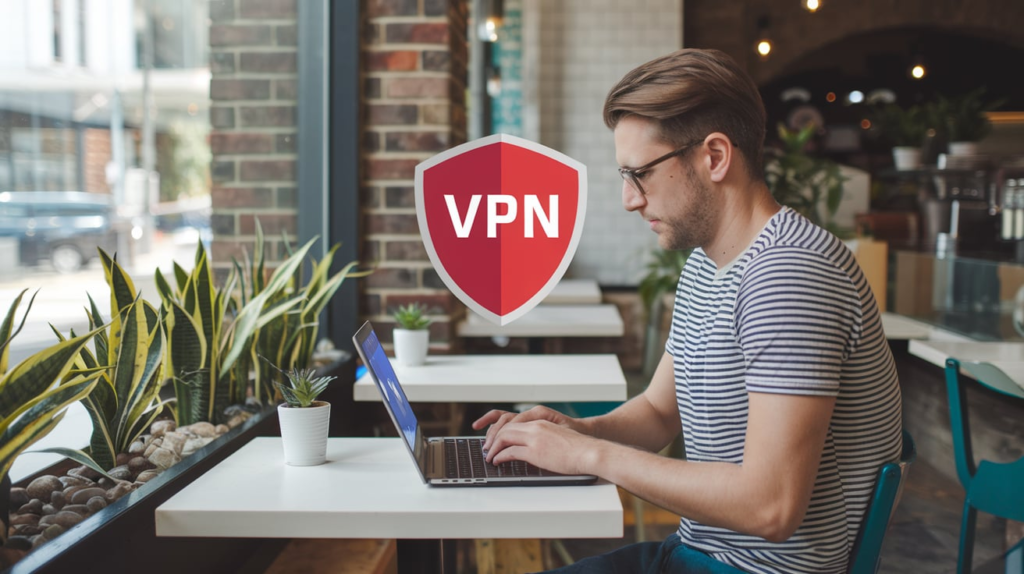Your Wi-Fi connection is what stands between your personal and professional life and the rest of the digital-first world. Online banking, smart home devices—all operate on that wireless signal. Except that if your Wi-Fi isn’t secured right, you’re basically inviting hackers, data thieves, and freeloaders into your network.
This complete guide will provide you with everything you need to secure your Wi-Fi with the best modern practices by 2025. Whether you’re a complete newbie or a tech enthusiast, these are the steps to take to secure your home Wi-Fi from unauthorized access, cyber attacks, and potential data breaches.
Why It Is Important to Have Wi-Fi Security
Many believe their home Wi-Fi is safe simply because there is a password protecting it. Unfortunately, that is no longer an adequate security measure. Here’s why the securing of your Wi-Fi is so important:
- Limitation of data theft by hackers monitoring data across open networks
- Stop ‘bandwidth creeping’ in from your neighbors or trespassers
- Security for smart devices in your home that are connected to the network
- Avoid malware and spyware penetration through network orifices
- Privacy for sensitive activities, for instance, online banking, email communication, and remote work
How to Secure Your Wi-Fi
Here are the best ways to implement security on your wireless network:
Alter the Default Router Name and Login Credentials
Routers come with default names (SSIDs), as well as admin login credentials. Of course, these defaults are well-known so that cyberpunks can easily find a way into your network.
What to do:
- Go to your router’s admin panel; usually, it might be 192.168.0.1 or 192.168.1.1
- Change the SSID to something unique – not personal, however.
- Update the admin username and password to some strong, complex combination
Use WPA3 Encryption
If your router is using WPA2 or, even worse, WEP, you are wide open to modern cyberattacks.
WPA3 is the most secure standard till 2025.
How to update:
- Navigate to security settings from your router dashboard
- Select WPA3-Personal (if available)
- Choose a very strong WiFi password, 12 characters long using a mix of upper and lower case letters, numbers and symbolsHide Your SSID
By default, your Wi-Fi network broadcasts its SSID so devices can find it. Hiding the SSID makes it harder for outsiders to discover your network.
How to do it:
- In your router settings, look for the “Broadcast SSID” option
- Turn it off
- Manually connect your devices to the hidden network (you’ll need to enter the SSID and password)
Read Also >>> RMF Steps: Secure Your Systems with Effective Risk Management
Regularly Update Router Firmware
Manufacturers of routers release firmware updates to fix security holes and add features in them. If you’re not updating, your Wi-Fi is at risk.
Steps to update:
- Check your router model and manufacturer website first
- Log into router settings and look for Firmware Update
- You have to must Enable automatic updates if supported
Disable Remote Management
Remote access allows you (and potentially hackers) to control your router from anywhere via the internet. Unless you absolutely need it, turn it off.
How:
- Locate “Remote Management,” “Remote Access,” or “WAN Access” in your router settings
- Disable the option
Turn Off WPS (Wi-Fi Protected Setup)
WPS allows devices to connect via a button or PIN, which can be easily brute-forced by attackers.
What to do:
- Go to the WPS settings on your router
- Turn off both WPS button and PIN options
Limit Connected Devices
Too many devices on your network? Someone might be piggybacking. Limit who and what connects to your Wi-Fi.
Actionable tips:
- Use the Device List feature in your router to see who’s connected
- Kick out unknown users immediately
- Set up MAC address filtering to allow only approved devices
Create a Guest Network
Having visitors or clients? Never share your primary Wi-Fi credentials. Set up a guest network with limited access.
How:
- Enable “Guest Network” in your router settings
- Use WPA3 and a strong password for it
- Block access to your main network and internal devices
Use a Secure DNS Provider
Default ISP DNS servers may be slow and less secure. Upgrading to a secure DNS can add a layer of protection.
Best DNS providers in 2025:
- Cloud flare DNS (1.1.1.1) – Fast and privacy-focused
- Google DNS (8.8.8.8) – Reliable and secure
- Quad9 (9.9.9.9) – Security-based DNS with malware blocking
You can change this via your router or device network settings.
Monitor Your Network Activity
Use apps or built-in tools to keep an eye on what’s happening on your network.
Tools to try:
- Fing (mobile app)
- Glass Wire (Windows/mac OS)
- Your router’s admin dashboard
Look for unknown devices, strange data spikes, or unauthorized access.
Signs Your Wi-Fi May Be Hacked
- Internet is slower than usual
- Devices are disconnecting randomly
- Unknown devices appear in your router settings
- Changed network settings or passwords
- Redirected web pages or popups
If you notice any of these, change all credentials immediately, update firmware, and reset your router.
Bonus Tips for Advanced Users
- Use a VPN on your router for full-home encryption
- Segment your IoT devices on a separate VLAN if supported
- Enable logging to track access history
- Use firewall rules if your router supports it
- Upgrade your router every 3–5 years to stay current with security standards
Read Also >>> Android Viruses and How to Protect Your Device
Final Thoughts: Stay One Step Ahead
In a world where cyber threats evolve constantly, securing your Wi-Fi is no longer optional — it’s a necessity. By following the steps outlined in this guide, you can build a strong, secure, and private wireless network for your home or small office.
Don’t wait for a breach. Take action today.
FAQs
How often should I change my Wi-Fi password?
Every 3–6 months or immediately if you suspect unauthorized access.
Is WPA3 available on all routers?
No. If your router is older than 2019, it might not support WPA3. Consider upgrading.
Can hiding my SSID completely secure my network?
No, but it adds an extra layer of difficulty for attackers. It should be used alongside other methods.
Should I use a VPN with my home Wi-Fi?
Yes, especially if you want to add encryption and hide online activity from ISPs or snoopers.
What’s the best router for home security in 2025?
Look for routers from brands like ASUS, TP-Link, and Net gear with WPA3, firewall support, and regular firmware updates.


